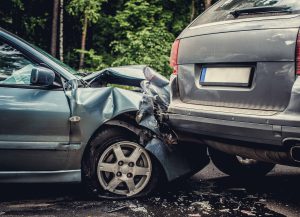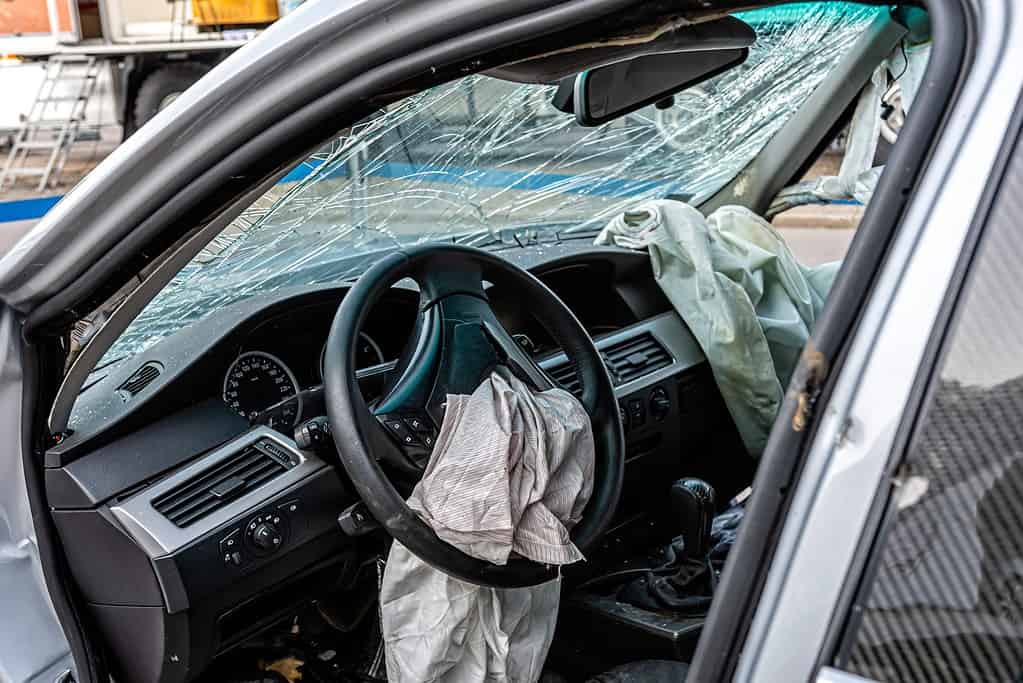Being involved in a car accident is stressful. Whether you are fully or partially at fault, you might be feeling anxious and confused about what comes next. The truth is that car accidents occur, and it is critical to hold yourself accountable for your negligence the same way you would expect someone else to take responsibility if they were at fault.
While car accidents can be quite complicated, it is difficult to claim compensation if the accident was completely your fault. However, if you were partly at fault, you may still be able to make a claim.
Generally, compensation is paid when someone has suffered injury or property damage as a result of someone else’s negligence or breach of duty. In other words, you can only seek compensation if your injury or property damage was negligently caused by someone else.
In this case, you will file a car accident claim against the other party or, more commonly, against their insurance company.
Read on to learn more about auto accidents and compensation, including how no-fault insurance states work.
What Is a Fault Accident?
A fault accident claim means that the crash was caused totally or partially by one of the drivers involved. In most cases, car accident lawyers are known to deal with no-fault accident claims where their client is not to blame for the accident, which may have caused the injuries and property damage.
However, there are some cases in which the claimant may be partly responsible for the car accident in question. Such incidents are usually described as fault accidents and are considered when the insurance company is attending to the claims demand.

When you are involved in a fault accident (meaning you were partially at fault), there are several possibilities depending on the nature of the car insurance policy you hold.
If you hold a comprehensive insurance policy, your auto insurance company may cover damages to your car and the damage to the other driver’s car. The other driver may also be covered for injuries suffered as a result of the incident.
But if you only have liability coverage, you may not be entitled to payments for any damages caused to your car.
Understanding the Comparative Negligence Law
Most states in the U.S use the comparative negligence law when determining compensation in car accident claims.
Comparative negligence means that even though you were partially at fault for a car accident, you can still be entitled to compensation. In this case, the jury will determine your percentage of fault and the percentage of fault that the other party contributed to the crash.
In comparative negligence, if you were entirely responsible for the accident (meaning you were 100% at fault), you are not entitled to any compensation.
However, as long as you were not 100% at fault for the accident, you can recover damages. For example, if you were speeding and distracted at the time of the accident, you may be considered fully at fault for the accident.

But if the other party was also speeding and distracted or making an illegal turn, they could also be assigned some fault.
According to the legal theory of comparative negligence laws, if you were partially at fault but suffered injuries or any other form of damage, your compensation will be cut down by your percentage of fault.
For example, if it is determined that you were 40% at fault for the collision and suffered damages worth $100,000, you will be entitled to receive only 60% of your total damages ($60,000). The overall amount of your reward will generally be reduced by the percentage of fault assigned to you for the accident.
What Is a Partly At-Fault Accident?
A partly at-fault accident is also referred to as a 50/50 accident or a 50/50 split liability. In this case, the complications arising due to fault in a car crash may not be clear from the onset.
Given that most car accidents are relatively easy to establish who was at fault, it may be quite hard to establish joint liability for an auto accident.

In cases where the judge will rule in favor of a 50/50 split liability, thorough investigations are usually conducted into the accident. A complete investigation into the incident can help establish that both motorists are fully responsible for the blame.
Once joint liability has been established, each liable party takes a 50% share of the blame if there were only two cars involved in the accident. From there, both parties can go-ahead to file for personal injury claims if they have suffered injuries as a result of the accident.
What Can I Claim Following a 50/50 Split Liability Accident?
Typically, you can claim general damages as part of your 50/50 split liability personal injury claim. With the help of your car accident attorney, you can file for pain and suffering, emotional distress, physical impairment, and physical disfigurement.
In some other cases, you may also be eligible to file for special damages, including medical expenses, repair/replacement of damaged property, loss of income, loss of future employment capability and other expenses that may be required for home adaptation.
What If the Accident Was in a No-Fault Insurance State?
Approximately 12 states in the country follow what is known as no-fault insurance laws for car accidents.
In these states, drivers must purchase a no-fault auto insurance policy that covers lost wages, physical therapy, medical costs, and other expenses related to damages they may suffer as a result of the accident, regardless of who was at fault.
The no-fault auto insurance policy is also referred to as the personal injury protection policy. Typically, car damage is not covered by the no-fault auto insurance. For that, you will need to purchase a collision or comprehensive coverage.

However, the minimum state-required liability coverage will typically cover damage to the other motorist’s car. The limits of a no-fault insurance policy depend on the specific terms of the policy listed on the declaration page that you sign off.
The strictly no-fault states are Hawaii, Florida, Michigan, Utah, Minnesota, New York, Kansas, Massachusetts, North Dakota, and Puerto Rico. Kentucky, Pennsylvania, and New Jersey give motorists the option to choose between standard liability insurance and no-fault insurance.
How Does Personal Injury Protection (PIP) Coverage Work Outside No-Fault States?
Even though PIP coverage is mandatory in no-fault insurance states, it is offered as optional coverage in the other states as well.
PIP is designed to cover a wide range of expenses related to bodily injuries you may sustain in a car crash. With PIP coverage, you can claim compensation for medical expenses in an accident that was your fault.

Besides medical expenses, PIP also covers long-term physical rehabilitation, lost income, transportation to doctor appointments, acupuncture, funeral benefits, and a wide range of other expenditures. State laws usually set limits on what personal injury protection policies must cover on what is considered reasonable.
Regardless of whether you live in a no-fault insurance state or not, your PIP coverage will most likely be based on your unique needs, fault notwithstanding.
Have You Been Involved in a Car Accident that Was Your Fault? Get the Legal Help You Deserve!
The truth is that you can still file for compensation even if you were partially at fault for an accident. It all depends on where you live and the type of auto insurance policy you have.
While the process can be complicated, working with an experienced car accident lawyer can make things relatively easy for you.
Get started today by reaching out to an experienced car accident lawyer near you!

